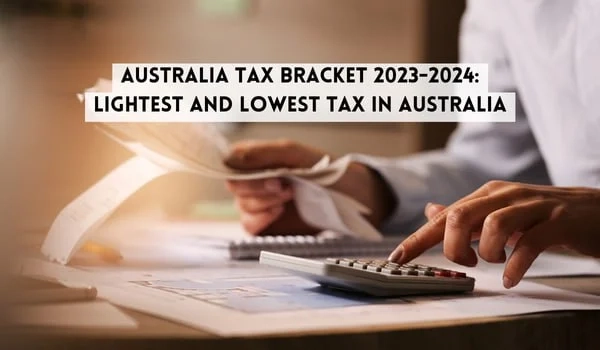Australia’s Average Tax Rate Increase Leads OECD Countries Due to Bracket Creep and End of Tax Offset

Australia saw the largest rise in average tax rates among developed nations last fiscal year, driven by bracket creep and the conclusion of a tax offset that mainly impacted low- and middle-income earners.
According to data from the Organisation for Economic Cooperation and Development (OECD) released on Thursday, Australia’s average tax rate for the 2022-23 financial year went up by 7.6 percent — the highest increase among the 38 OECD member countries.
The OECD’s annual Taxing Wages report indicated that an Australian single individual with no children, earning an average salary, paid $24,791 in income tax, which amounts to 24.9 percent of their total gross salary.
The OECD attributed this 7.6 percent rise to two main factors: the termination of a tax offset and bracket creep.
The report highlighted that the discontinuation of the Low and Middle Income Tax Offset (LMITO), informally known as the Lamington, on June 30, 2022, led to a heavier tax load for low- and middle-income earners, a situation previously noted by ABC News earlier in the year.
The OECD discovered that nominal wages — the amount paid by employers to employees — rose due to heightened inflation. This increase caused a larger segment of workers’ earnings to move into higher tax brackets, resulting in a higher tax rate, a phenomenon referred to as bracket creep.
Australia is among the OECD nations where the income tax brackets do not automatically adjust as incomes grow.
Lower middle-income earners hit hardest by tax increase: OECD

The impact of the Australia’s average tax rate tax offset ending and bracket creep is clear in OECD statistics showing the tax increase for Australians earning two-thirds of the average income.
Last year, those earning two-thirds of the average wage ($66,709) paid 20.2 percent in income tax, amounting to $13,475. This is the highest tax burden seen since 2000.
In comparison, those earning two-thirds of the average wage in 2022 ($64,142) faced a significantly lower tax rate of 17.2 percent, or $11,033.
In essence, although wages for this group rose by $2,567 over the year, a single Australian worker without children earning two-thirds of the average wage ended up just $125 better off in nominal terms, and significantly worse off when considering the effects of inflation on living costs.
Meanwhile, in 2023, single Australians earning 167 percent of the average wage — or $166,274 — saw their tax rate rise to 34 percent, totaling $56,533 in taxes.
In 2022, single earners at the same income level — $159,877 — faced a slightly lower tax rate of 33.2 percent, which amounted to $53,079.
According to OECD figures, although the average salary for this group increased by $6,397 over the year, the minor increase in tax rate meant they were still $2,943 better off overall, not considering the substantial impact of inflation on living expenses.
Their current tax rate of 34 percent matches those seen in 2015 and 2017.
This information precedes the Stage 3 tax cuts set to be implemented on July 1 of this year.
The tax reductions, approved by the Coalition government in 2018 and 2019, were set to deliver substantial tax cuts to upper-middle and high-income earners, smaller reductions for middle-income earners, and no tax cuts for many low-income earners.
However, this year, the Albanese government enacted legislation that scaled back the tax advantages for individuals earning over $146,486 annually while enhancing the tax cuts for those earning less than this amount.
Does Australia rely too heavily on income taxes?
The report revealed that Australia’s average tax rate of 24.9 percent is the fourth-highest among developed nations, trailing only Denmark, Iceland, and Belgium, and significantly surpassing the 15.4 percent average for the 38 OECD countries.
However, Australia’s high ranking in average income tax rates does not account for social security contributions prevalent in many other countries, which makes it a less accurate measure for comparing across OECD nations, stated Matt Grudnoff, a senior economist at the Australia Institute.
He argued that the common use of OECD income tax percentages to suggest Australia’s heavy reliance on income tax for funding government services is based on a limited understanding of what constitutes income tax.
“Australia’s perceived over-reliance on income tax is essentially a matter of semantics regarding the definition of ‘income tax,'” he explained.
In a different report released on Friday that analyzes Australia’s dependence on income tax, Mr. Grudnoff pointed out that this “trick” involves the OECD’s omission of social security contributions.
He explained that omitting these contributions, which are mandatory fees deducted from workers’ salaries to fund unemployment benefits and pensions for seniors and the disabled, tends to overstate the role of income tax in Australia.
“Leaving out social security contributions can make it appear as though Australians pay more income tax compared to other OECD countries, but this does not provide a fair country comparison,” Mr. Grudnoff remarked.
“Social security contributions are taken from the gross incomes of employees, and the OECD actually combines these contributions with income tax when calculating the net salary of workers.
“To accurately assess how dependent Australia is on taxes on income, including social security contributions is essential,” he added.
Australia does not levy any social security contributions on workers or employers, and the OECD report excludes compulsory superannuation contributions because they are not considered a tax since individuals retain control over these funds.
The OECD provides additional data accounting for social security contributions in its Taxing Wages report.
With these contributions included, Australia ranks as the ninth lowest-taxed country at 29.2 percent, significantly lowering its overall tax burden to well below the OECD average of 34.8 percent.
For a more accurate comparison of income tax rates between countries, Mr. Grudnoff suggests using the tax to GDP ratio.
According to 2021 data, Australia has the ninth-lowest tax to GDP ratio among OECD countries at 29.5 percent, compared to the OECD average of 34.2 percent.
“If Australia were to collect taxes at the average OECD rate, it would generate an additional $105 billion in revenue each year,” stated Mr. Grudnoff.
Considering this, he noted that Australia is a low-tax country relative to other OECD nations and is among the least dependent on income taxes.
“Assertions that Australia excessively relies on income tax are not supported by the facts,” Mr. Grudnoff stated.
“Australia remains well below the OECD average in terms of both income tax rates and the total tax collected.”

Similar Posts
Power Without Limits: Understanding the Technology Behind Modern Anker Chargers
How Does the MIT Livable Wage Calculator Impact Financial Planning?
The Best Wifi Mesh for 2024